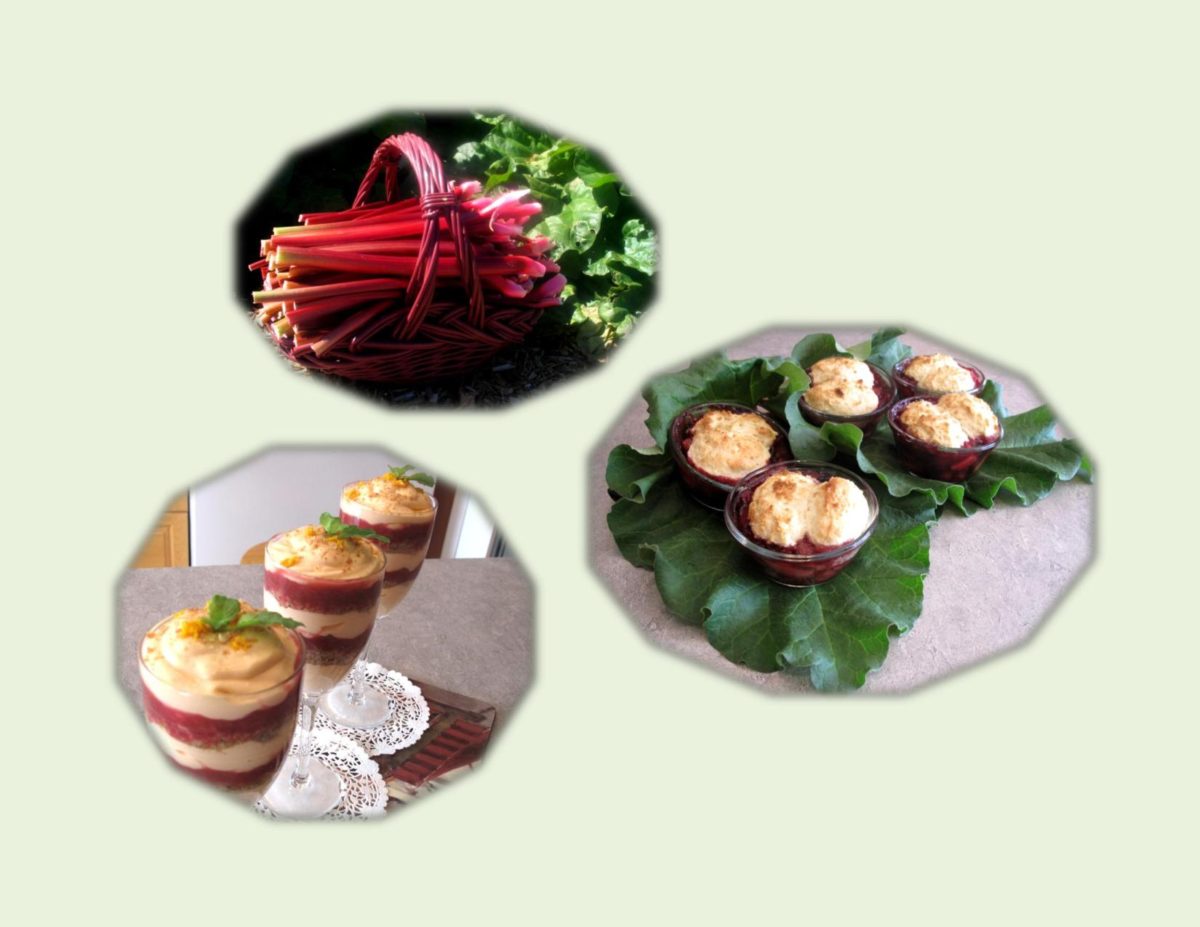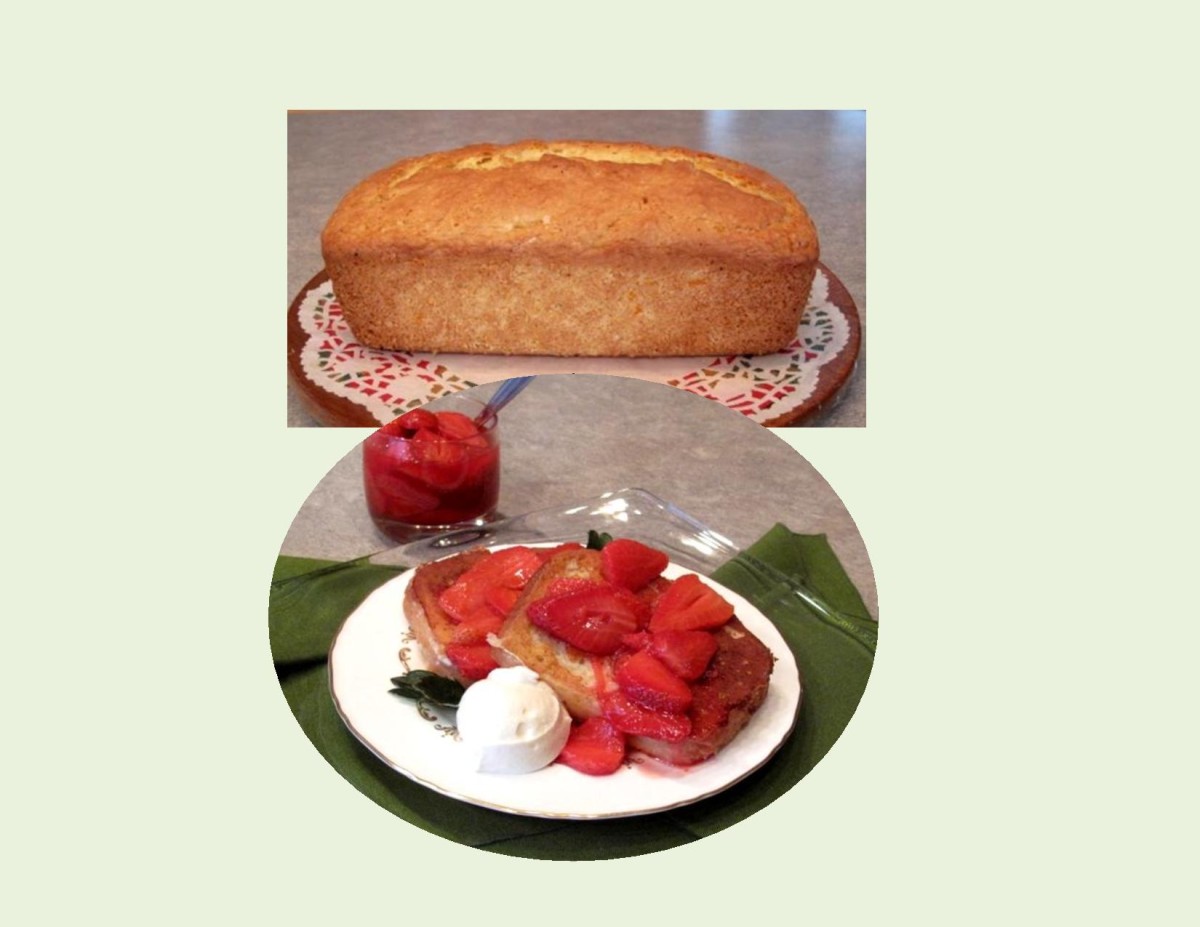
I can not remember ever being able to pick fresh rhubarb in the middle of May here in northern Alberta, Canada. We are definitely seeing some serious changes in the weather.
I love everything about the plant — how good it tastes, the beautiful huge foliage in the garden and how it can keep on producing all season long. The uses of rhubarb are endless. For most part, I think it is usually thought of as a dessert ingredient. I tried making it into a spicy chutney with pork tenderloin for supper one night and it was real nice.
Bordering one side of my mother’s large country garden grew six or eight rhubarb plants. I can’t even imagine how much they would produce. I recall that special taste of her Saskatoon-Rhubarb Pie. Saskatoon berries grew wild in the foothills of the Rocky Mountains. This was a good reason for our family to pack a picnic lunch and make the drive on a Sunday afternoon to pick saskatoon berries. Not only did it make for quality family time but those fresh berries were soooo– good!.
Here are a couple of dessert recipes I made with some of my first rhubarb stalks of this season. One is Rhubarb-Blueberry Cobbler, an old fashioned baked dessert with a tender biscuit crust sprinkled with sugar. The other one is Rhubarb-Orange Cheesecake Parfait. If a rhubarb plant isn’t growing somewhere in your back yard you can usually locate some at a neighborhood Farmer’s Market throughout the summer.
Print Recipe
Rhubarb Desserts
Enjoy a little rhubarb nostalgia in two different presentations.
Votes: 1
Rating: 5
You:
Rate this recipe!
Ingredients
Rhubarb-Blueberry Cobbler
Rhubarb-Orange Cheesecake Parfaits
Ingredients
Rhubarb-Blueberry Cobbler
Rhubarb-Orange Cheesecake Parfaits
|
Votes: 1
Rating: 5
You:
Rate this recipe!
|
Instructions
Rhubarb-Blueberry Cobbler
-
Mix chopped rhubarb & blueberries together in a large saucepan. Blend sugar & cornstarch together & stir into the fruit mixture. Stir in 1/4 cup cold water.
Place on medium heat & bring to a boil, then reduce heat to low & cook until juices flow & fruit is soft. Pour into an 8-cup casserole dish.
In a large bowl, combine flour, baking powder, 1 Tbsp sugar & salt. Blend well. Cut in margarine with a pastry cutter until mixture is a coarse texture. In another bowl blend milk & egg.
Make a well in center of flour mixture; add milk/egg mixture & stir until flour is moistened. Drop dough by spoonfuls onto the fruit mixture. Sprinkle with brown sugar evenly. Bake about 25-30 minutes. Serve plain or with a dollop of yogurt or whipped cream.
Rhubarb-Orange Cheesecake Parfaits
In a plastic bag, coarsely crush gingersnap cookies; set aside.
Chop rhubarb stalks & place in saucepan with water. Cook over low heat until soft. Remove rhubarb from heat. Add sugar, Cointreau & cornstarch; mix well. Return to heat & stir until thickened; cool completely.
In a large glass bowl, dissolve jelly powder & boiling water, making sure it is completely dissolved before adding to cream cheese. Blend in cream cheese with a hand mixer on low speed. Whisk in juice & zest of orange as well as the Cool Whip.
In parfait glasses, spoon a layer of cream cheese mixture; sprinkle lightly with gingersnap crumbs then add a layer of rhubarb sauce. Repeat layers one more time making sure to divide cheesecake, rhubarb sauce & crumbs evenly between parfaits ending with cheesecake mixture.
Refrigerate about 4 hours; garnish a bit more orange zest & a fresh mint leaf if desired.

Today, March 28, was the birth date of my Mother. She passed away in 1978 at the age of sixty. Although 38 years have passed, it seems like it was only yesterday. She was truly an ‘Angel on Earth’, never to be forgotten by her family or by the people who’s lives she touched.
I have so many memories of her wonderful cooking and baking. In her honor today I decided to post a German Poppy Seed Coffee Cake.
Poppy seed has long been a popular ingredient in German and Austrian baked goods. Once again, as in the case of Easter bread, there are a great variety of versions. What always seemed to stick in my memory was that my mother’s poppy seed filling was never dry. It was almost as if the poppy seeds were in a vanilla pudding. If my memory serves me correct, she made it like a jelly roll.
Today I’m trying to re-create that ‘pudding filling’ and use it in a Bundt cake.
Print Recipe
German Poppy Seed Coffee Cake
A tender sour cream coffee cake with a custard-like poppy seed filling.
Votes: 1
Rating: 5
You:
Rate this recipe!
|
|
Votes: 1
Rating: 5
You:
Rate this recipe!
|
Instructions
FILLING
In a saucepan, over medium heat, combine pudding powder, sugar, poppy seed & lemon zest with cold milk, stirring constantly until it begins to simmer.
Simmer for 5 minutes; remove from heat.
CAKE
Preheat oven to 325 F. Grease a 12-cup Bundt pan.
Using a hand held mixer on medium speed, beat sugar, margarine & eggs, scraping bowl occasionally, for 2 minutes.
In a bowl, combine flour, baking powder, baking soda, cinnamon, salt & walnuts. Fold into wet ingredients alternately with sour cream.
Spread half of the cake batter in Bundt pan, pushing it slightly up the sides of pan.
Spoon poppy/pudding mixture over cake batter.
Gently spread remaining cake batter on top.
Bake for 45-50 minutes or until tests done. Remove from oven, place a wire cooling rack over pan. Invert & remove pan.
Serve with a dollop of Greek French Vanilla yogurt if desired or dust with icing sugar.

When I was 2 and my older sister was 6, my parents made a move to a farming community in southern Alberta. The farm my parents were able to purchase had been neglected for many years and took strong commitment and perseverance to renew the land and dwellings. The morning after we arrived, we had our first snow storm, which caught us without any coal. Fortunately my father was able to get some for our winter use. Soon after, Dad made a trip back to our old homestead. He drove the tractor pulling the combine all the way to our new farm with only one stopover in a city half way in between, a distance
of 231 km (144 miles).
One of my mother’s brother’s had gone ahead driving a grain truck loaded with what furniture and possessions my folks were trying to move. Along the way, being the truck was not covered, the metal lid flew off Mom’s flour storage container. Another traveler came upon it lying at the side of the road and stopped and hung it on a fence post. When my father making his long journey on the tractor came by and recognized the lid, picked it up and brought it the rest of the way home.
In the spring, my folks had to burn weeds and brush from 8-10′ (2-3 m) high in order to find a suitable area to plant a vegetable garden. ‘Mixed’ farming was truly a necessity as success was totally dependent on ‘Mother Nature’ when it came to grain crops.
Cattle, pigs and chickens all came into the equation, meaning my parents never had any part of the year that could be a bit more relaxed. As a teenager, I never realized what a special privilege growing up as a farmer’s daughter really was. Coming home on the school bus and having to do ‘chores’ seemed so boring as opposed to being able to spend after school hours with your friends. As I look back on those times now, it all comes clear as to how treasured and valuable those life lessons were.
My parents farmed until 1974 when they retired. They have since both passed away leaving my three sisters, one brother and I with many treasured memories.
I remember my mother making this orange bread loaf. I thought it was so unique because it used the fresh orange zest. The flavor was so distinct along with the bread being wonderfully moist. This recipe was one that has remained with me over the years, long after I had left my parents home. One year, on a holiday in Hawaii the restaurant we were at was serving orange loaf made into french toast complimented with a strawberry compote. I brought the idea home with me and used it numerous times over the years in my food service career. This year my husband and I enjoyed it on Valentines Day, but I’m sure you will find it great anytime.
Print Recipe
Orange Bread French Toast with Strawberry Compote
Flavorful orange bread loaf with strawberry compote topping.
Votes: 1
Rating: 5
You:
Rate this recipe!
|
|
Votes: 1
Rating: 5
You:
Rate this recipe!
|
Instructions
Orange Bread
Peel oranges thinly and finely chop rind (zest).
Boil with sugar and water for 10 minutes; cool
Add egg and margarine
Combine flour, salt, and baking powder
Add flour mixture alternately with milk
Pour into buttered 8 x 4 x 3 inch loaf pan
Bake at 350 F for about 45 minutes or until bread tests done.
French Toast
In a shallow bowl, beat eggs; whisk in the milk, salt and spices.
Soak the slices of orange bread for 30 seconds on each side.
Cook on hot greased griddle until golden brown on both sides and cooked through.
Strawberry Compote
Rinse, hull and slice strawberries.
Zest and juice lemon.
In a small saucepan, whisk together sugar, water and corn starch.
Add strawberries, mixing gently while bringing to a simmer for 5 minutes.
Remove from heat, cool slightly.
Serve with French toast. Top with French Vanilla Yogurt if desired.








